
Good As New
Our friends at Wyatt Polishing recently completed some restoration work and zinc plating for a number of seat runners and bonnet struts for the Jensens


Our friends at Wyatt Polishing recently completed some restoration work and zinc plating for a number of seat runners and bonnet struts for the Jensens
The Jensen 541 was a car produced by Jensen Motors. Each one of these cars has an individual story to tell, but the story of
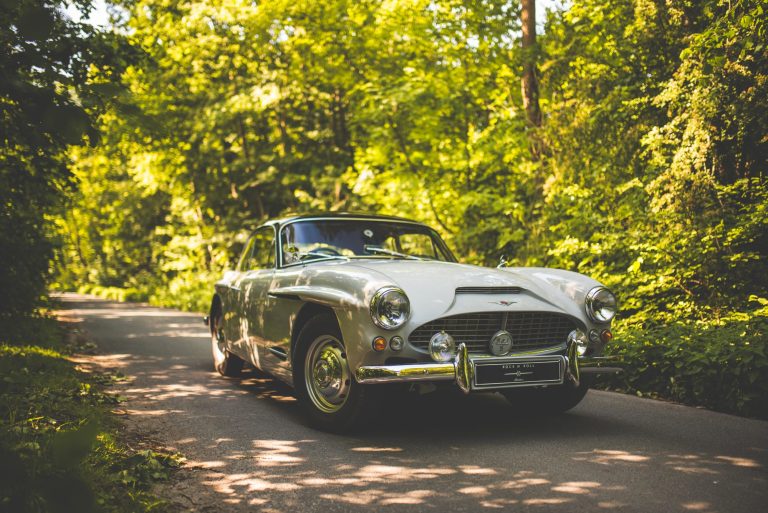
A little while ago, we shared some images of some of the previous classic Jensens we had restored that went on to be featured in

Local artist Paul Seymour has sent us in this beautiful watercolour painting of our 1959 Jensen 541R that he sketched at our stand at this
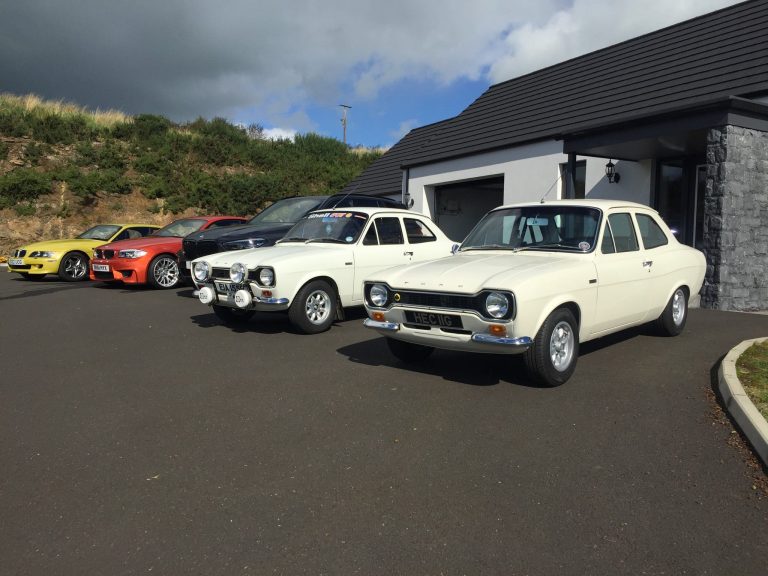
First up on tour is the amazing 1969 Ford Escort Twin Cam that was cruising around Ireland on holiday with its owner. We worked on
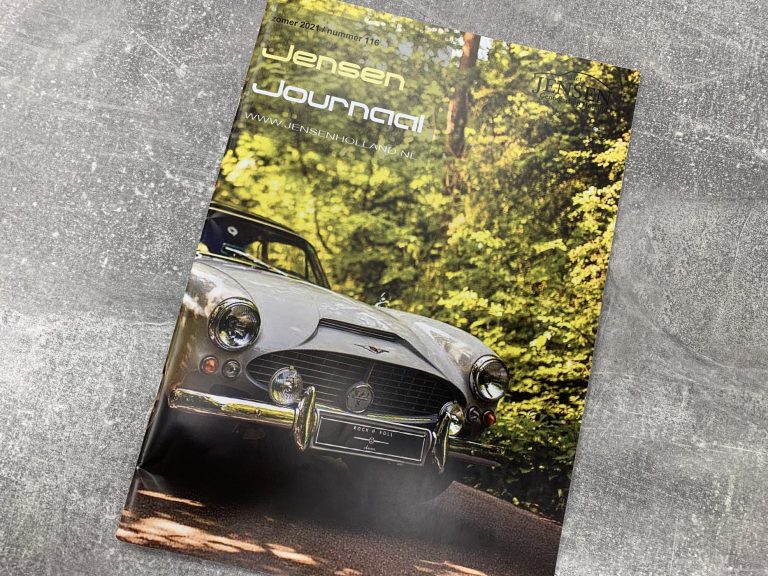
It is lovely to receive a copy of the Zomer 2021 Jensen Journaal in the post this week. Several of our Jensens that we have
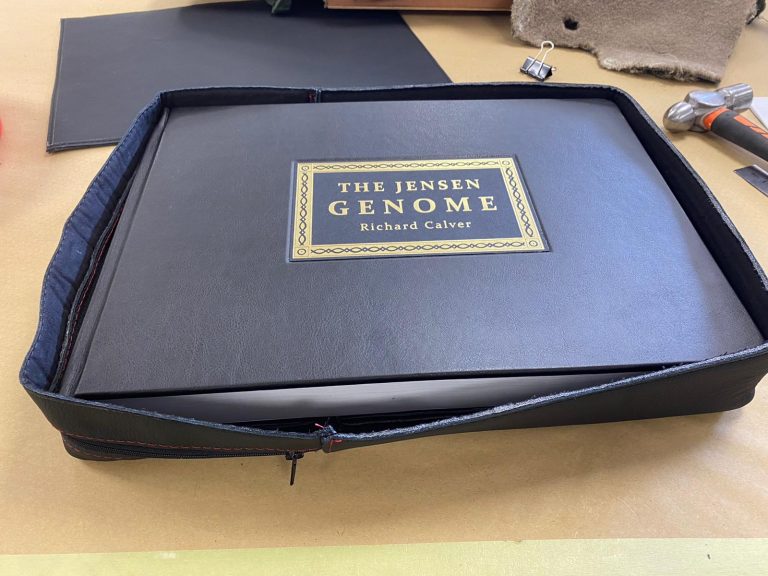
We call it the Jensen bible and in order to protect it Kath has made a bespoke leather book bag. Jensen Genome Richard Calver July

Some of you may remember we mentioned our busy Jensen workshop last year, and it hasn’t slowed down in 2021. We’ve become the Jensen Specialists
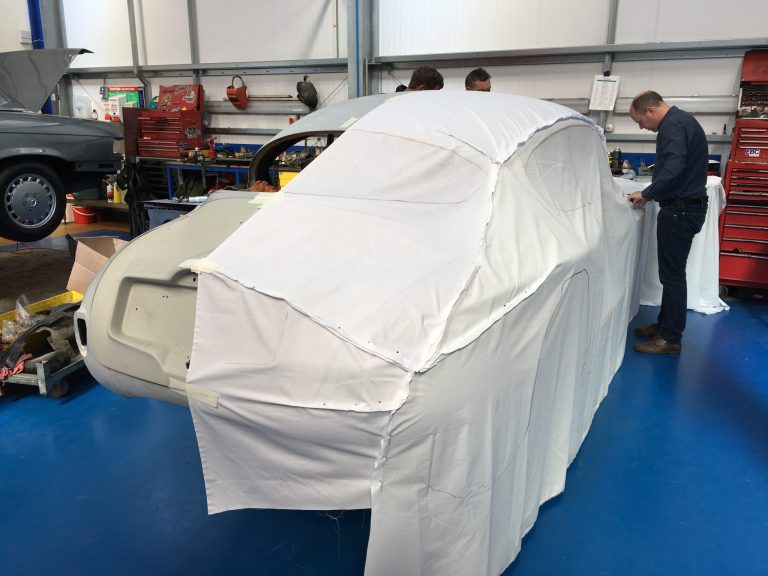
In order to manufacturer our bespoke Jensen 541S fitted car cover we have called upon the experts at Protec Covers in Bradford. They took a
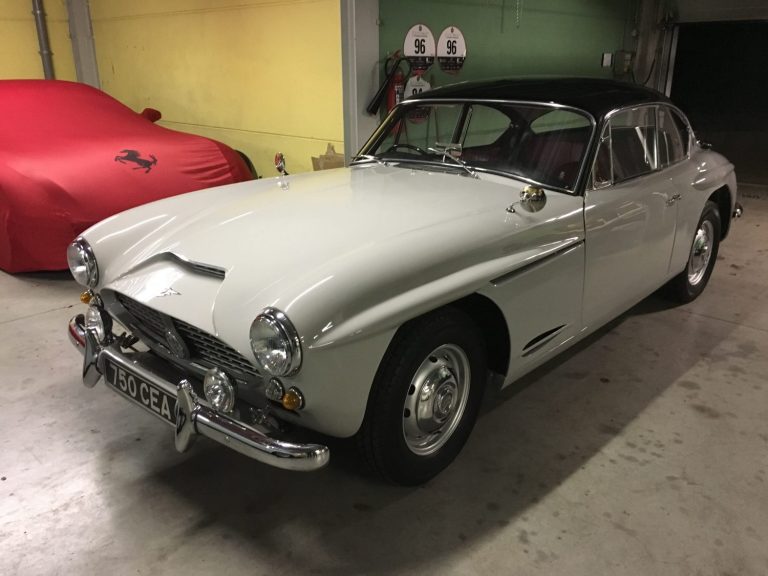
[vc_row][vc_column][vc_column_text]After a long journey that saw us head into Europe our 1960 Jensen 541S finally settles into its new home and what amazing company it
“Hi, I’m the former owner of the Jensen 541 S (prototype) that you have been restoring. I’ve been following the progress of its rebirth online

At the start of the 1950s, the Jensen Motor Company had a financially sound business producing commercial vehicles and building bespoke bodies for other manufacturers. As
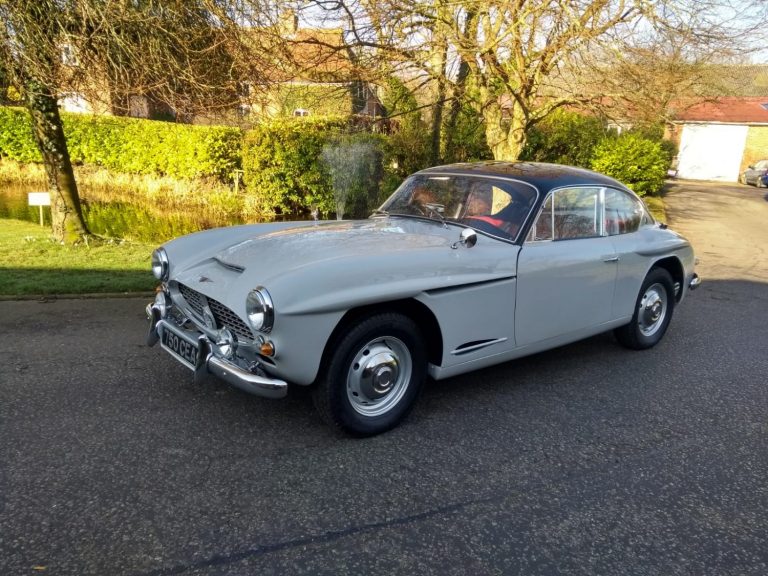
[vc_row][vc_column][vc_column_text]With our 1960 Jensen 541S restoration journey almost complete, today is the day for our wonderful photo shoot. The sun is shining bright and we

We are now into the very final stages of our 1960 Jensen 541S restoration. This very special and very unique car was one of only

Our Jensen 541S has returned to Graham Whitehouse Autos to have the gearbox set up. The gearbox was rebuilt by Graham Whitehouse Autos earlier in the project build

[vc_row][vc_column][vc_column_text]We already hold the tooling to re-produce the front grilles themselves but now requiring the front grille surround it was back to design mode for
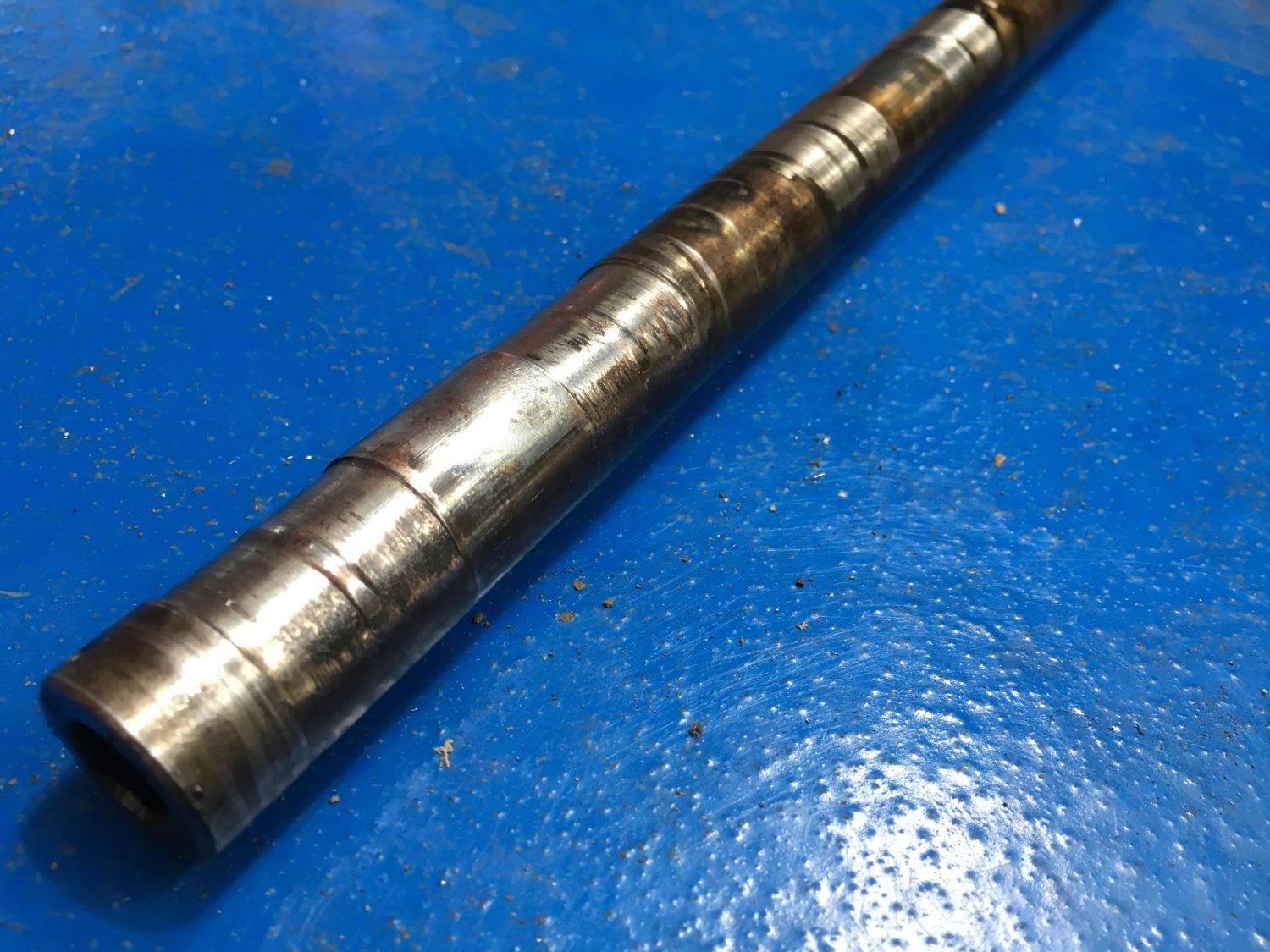
[vc_row][vc_column][vc_column_text]We are now fine tuning and running up our Jensen 541S engine. The engine has been removed and detailed but has not been rebuilt. We

We are now days away from the completion of our 1960 Jensen 541S (the prototype). It has been a long restoration journey but hugely rewarding

We have unknowingly used the services of Speedy Cable in the past on various clock and dials refurbishment productbut going through various third parties. On the restoration
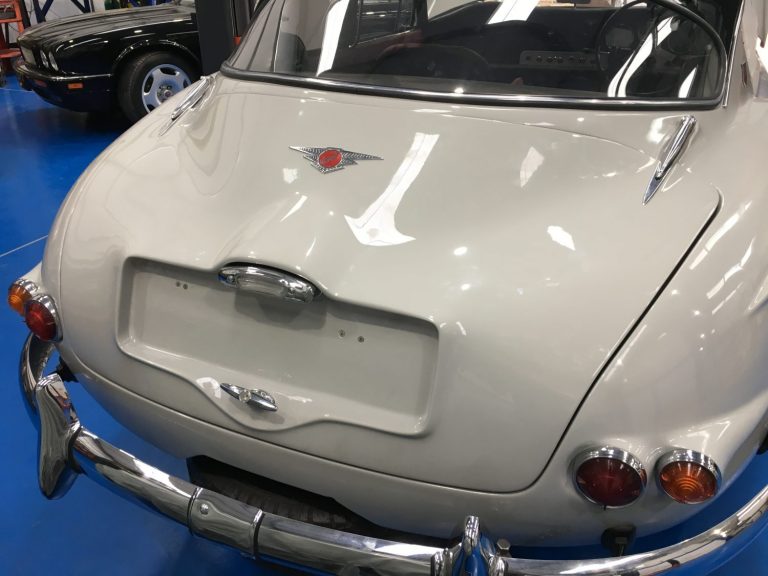
Lots of putting on and taking off today as John fits up the bootlid on our 1960 Jensen 541S. It is finally secure and in

Our Jensen 541S has been bare due to the missing spare wheel carrier and like most items on the Jensen they are almost impossible to
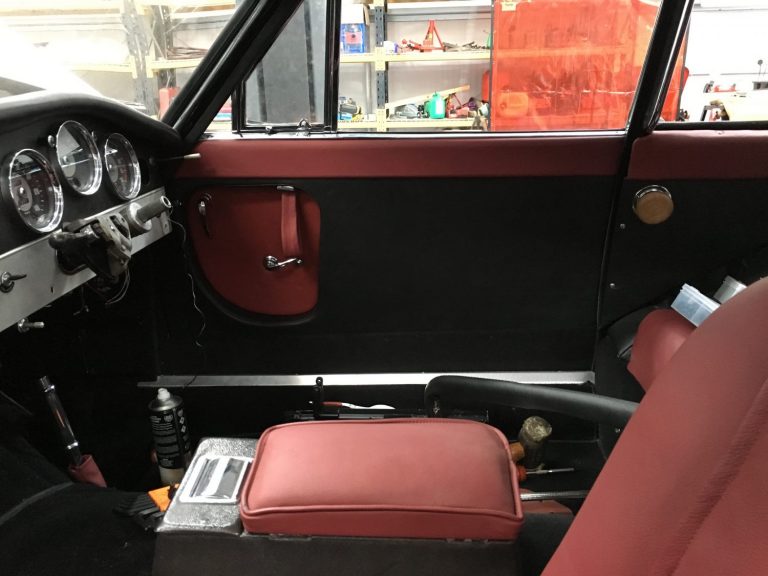
The beautiful door cards are now fitted back into place on our 1960 Jensen 541S. John is now on the final stages of the build
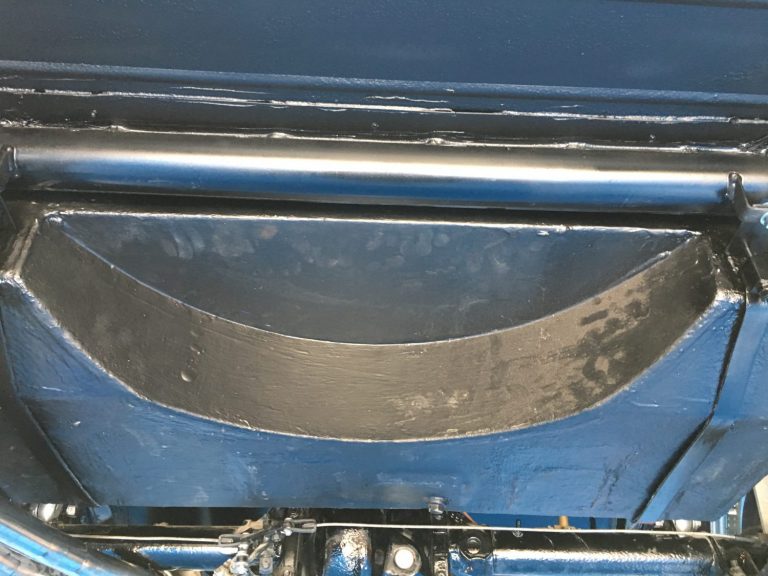
With the new flooring now in position we are now able to re-install the fuel tank to our 1960 Jensen 541S.

I won’t lie to you, fitting up the power steering hasn’t been ‘EZ’ (sorry, couldn’t resist), through no fault of anyone in particular but simply
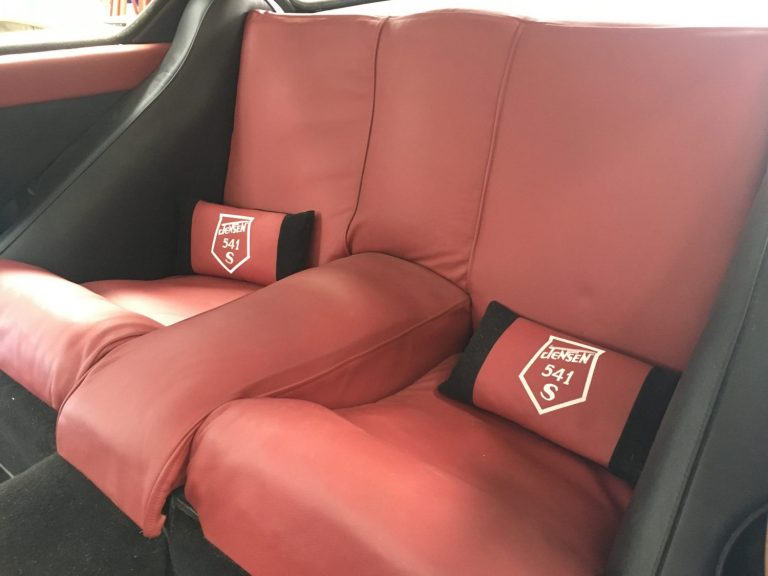
Just waiting on the door cards to be completed but we have made a really good start with the refit of the Jensen interior. We
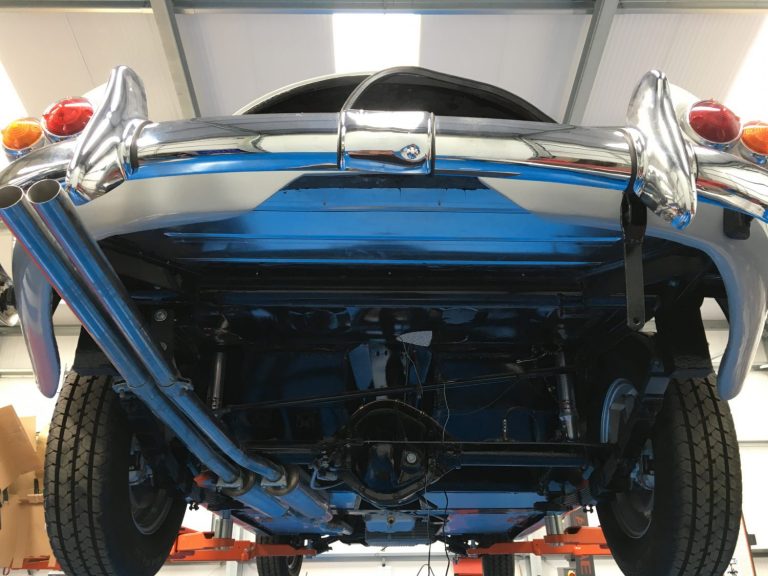
The brand new flooring is now in position and looking lovely.

[vc_row][vc_column][vc_column_text]A couple of extra parts to get re-chromed, an over-rider, brackets and oil filler cap. A few weeks time we’ll have these back and ready
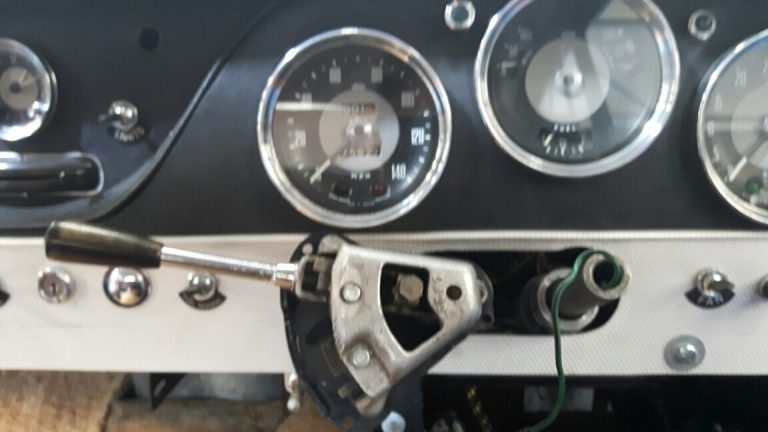
We are currently in the process of fitting up power steering to our 1960 Jensen 541S. Obviously not an original install when rolled out of

The order was placed at the back end of 2017 so it has been a long wait for the production of our Jensen 541S windscreen
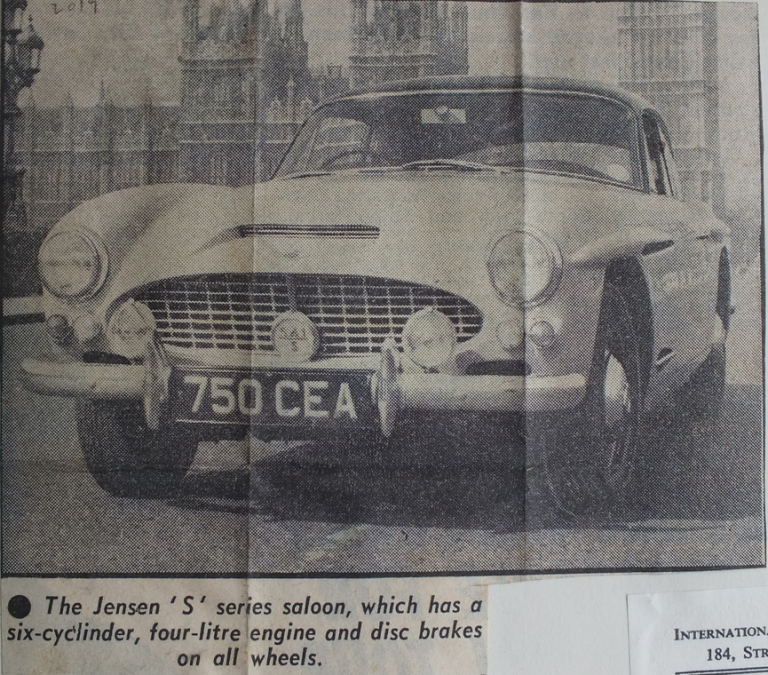
Original documentation from the Jensen Car Company to confirm our 1960 Jensen 541S was indeed one of the prototypes. ‘Congratulations on your acquisition. Your car
Our friends at Wyatt Polishing recently completed some restoration work and zinc plating for a number of seat runners and bonnet struts for the Jensens currently in the Bridge Classic Cars workshop.
When components like this look as good as they now do, you can tell that the fully restored cars they become a part of will be as beautiful as ever.
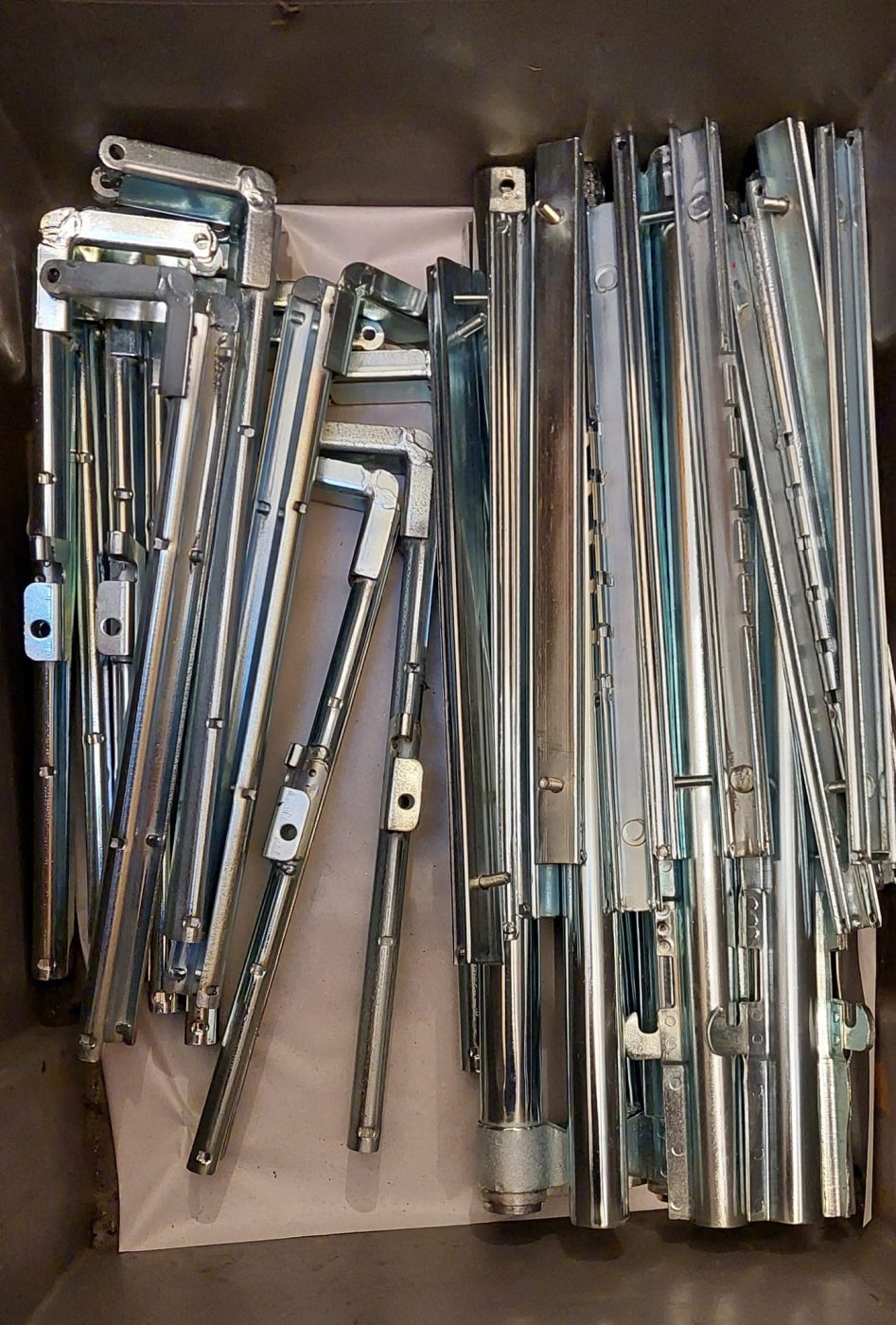
The Jensen 541 was a car produced by Jensen Motors. Each one of these cars has an individual story to tell, but the story of the Jensen 541, in general, is one that many car enthusiasts should be keen to hear.
If you want to know more about these truly iconic classic cars, then this brief history of the Jensen 541 can give you a good idea of how special (and rare) these cars really are.
At the Earls Court Motor Show of 1953, the Jensen 541 was shown to the public for the very first time. It would be another eight months before production properly started but, this was the date when the world was officially introduced to the 541.
Up until the 541, Jensen had mostly been using aluminium for the bodywork of their Interceptors (there were restrictions on the use of steel still in place as the world recovered from the second world war). When it came to making the boot lids of the Interceptors though, Jensen played around with a new material of the time – fibreglass.
When working on the idea for the 541, Jensen wanted to do something big, so they decided to make a lot more of the car from this new wonder material.
In June of 1954, production of the Jensen 541 began. At the time, you could buy your very own 541 for £2146.
A little over 2 years after production of the 541 began, the 541 Deluxe was introduced. As this was a more luxurious car that featured all disc brakes, the price of the car increased to £2626.
Only 53 Jensen 541 Deluxes were made in total.
A year later, the 541R was introduced. When first released, these were fitted with Austin Princess (DS7) twin-carb engines, and an overdrive gearbox. The price tag for a 541R, at the time, was £2866.
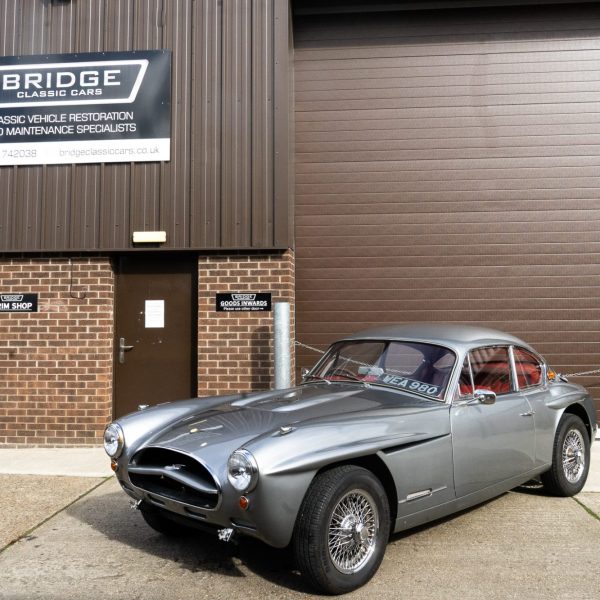
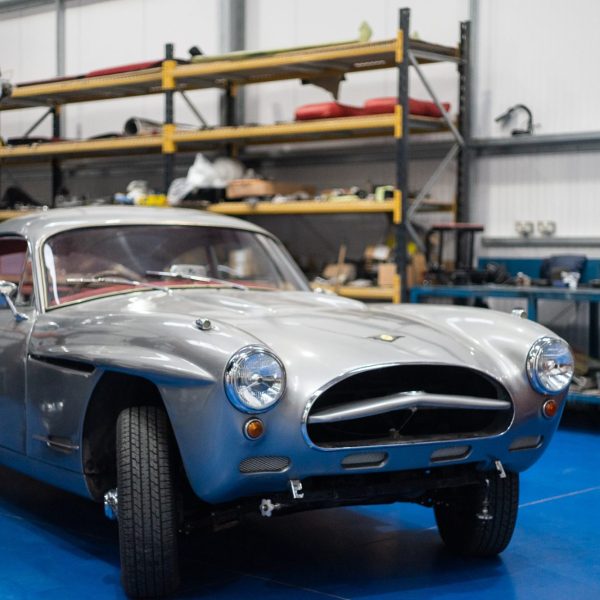
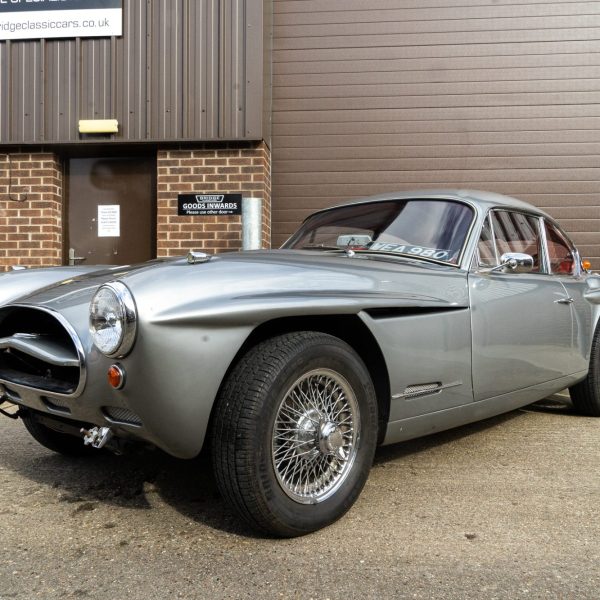
At the beginning of 1958, the very last Jensen 541 was made.
Two years later, the Jensen 541R was pulled from production too. At this point, less than 200 541Rs had been made. Jensen had now moved on to the Jensen 541S which had a larger interior, and automatic transmission as standard. Due to these upgrades, the 541S cost £3195.
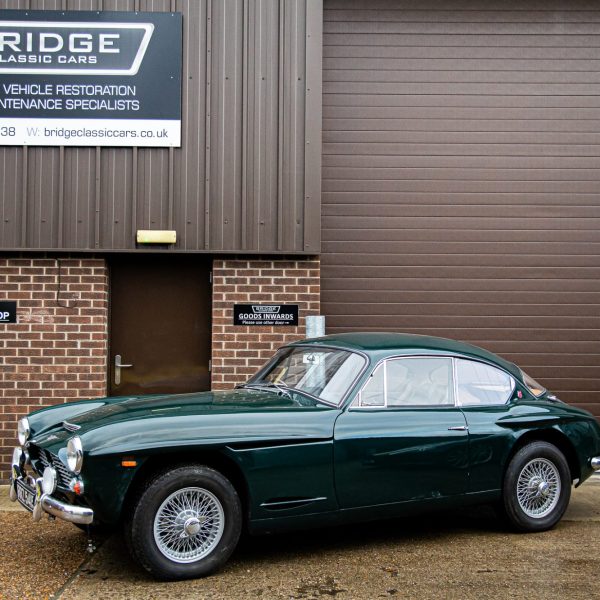
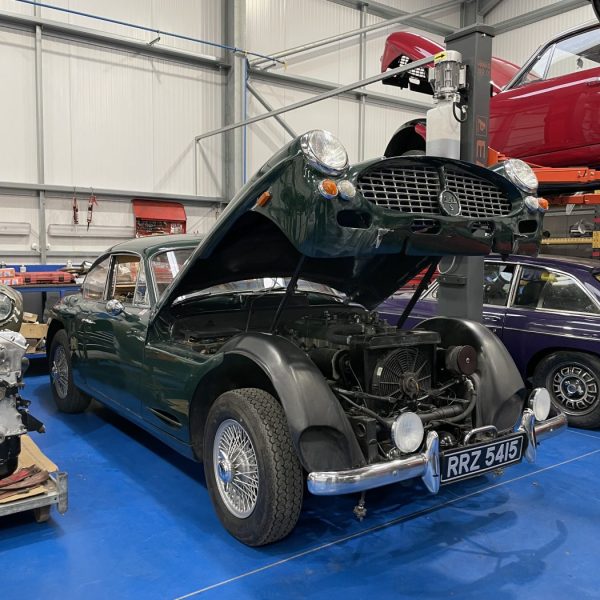

At the beginning of 1963, production of the Jensen 541S ended. Less than 150 had been made before being replaced by the Jensen CV-8 which had been introduced the previous year (1962).
Jensens have had a strong presence in the Bridge Classic Cars workshop for a long time. Our team of classic car technicians have restored multiple 541s and some of our current projects include a few more too.
Considering only a few hundred of these classic cars were made, we love seeing them in the workshop. We love working on them, and we love getting them back on the road for everyone to enjoy.
A little while ago, we shared some images of some of the previous classic Jensens we had restored that went on to be featured in The Jensen Journaal – a magazine published in Holland for people who love all things Jensen.
We have recently found even more photos of one of our previous cars from our feature in the Jensen Journaal and, we think you’ll agree, our 1960 Jensen 541S (The Prototype) has never looked better!


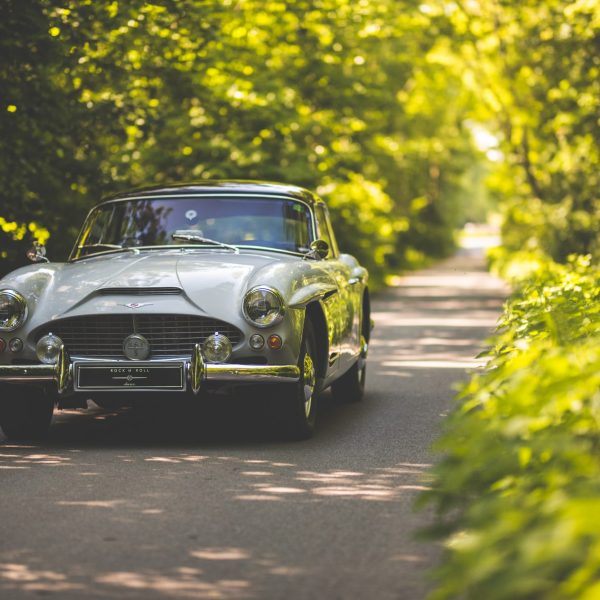
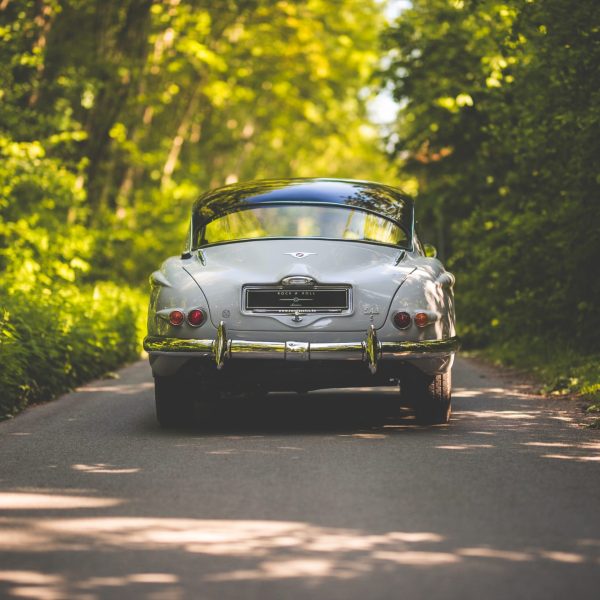
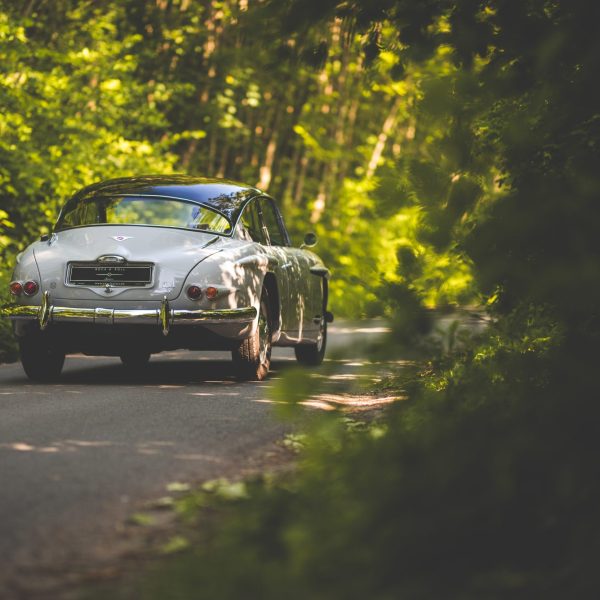


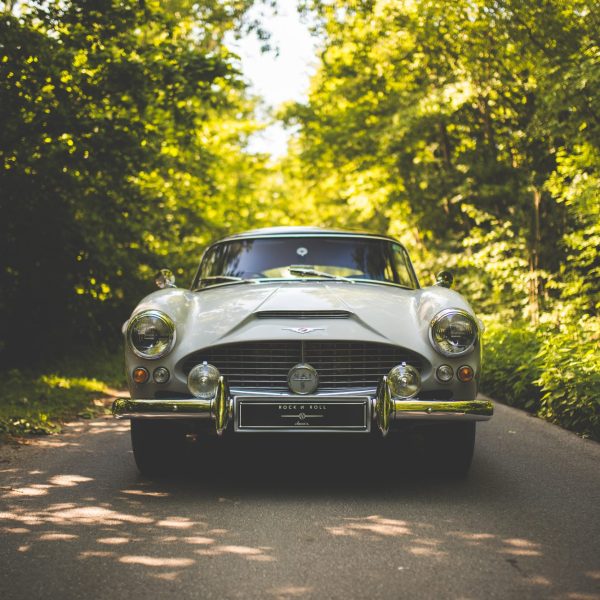

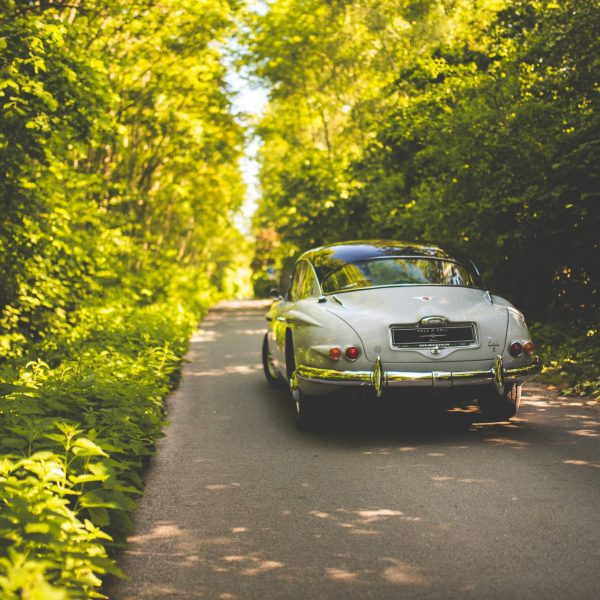
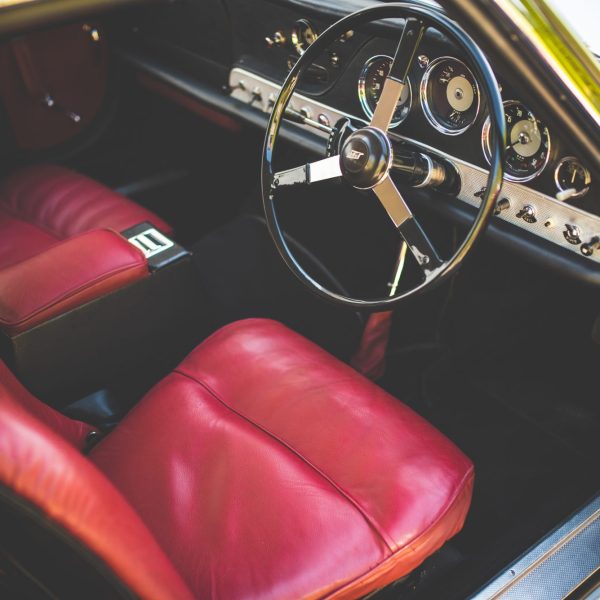
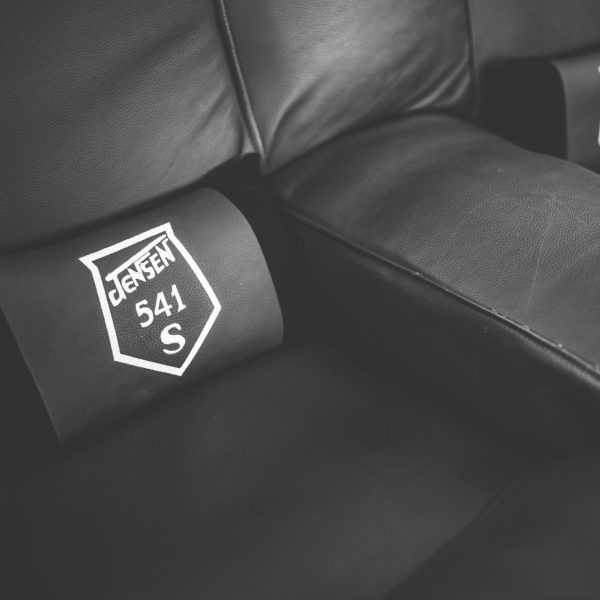
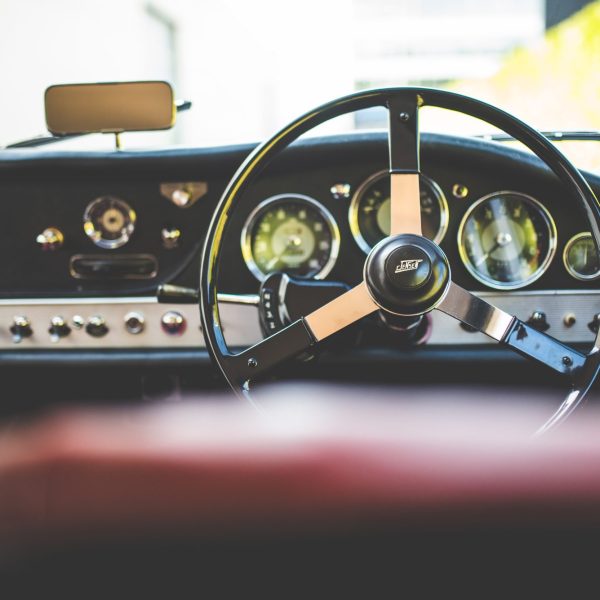
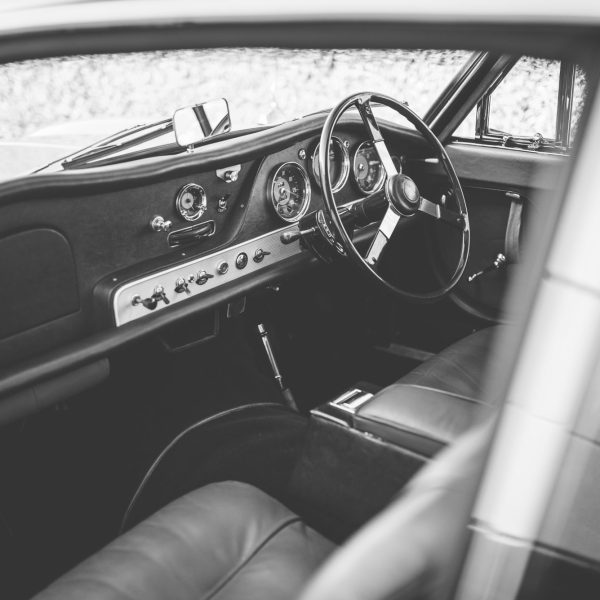
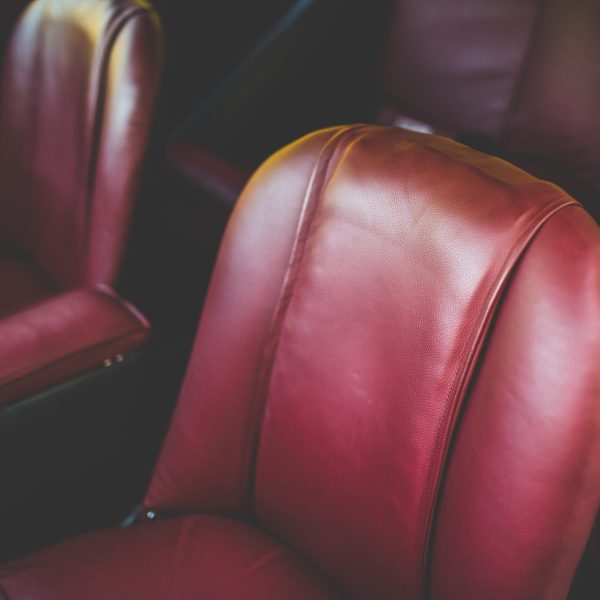
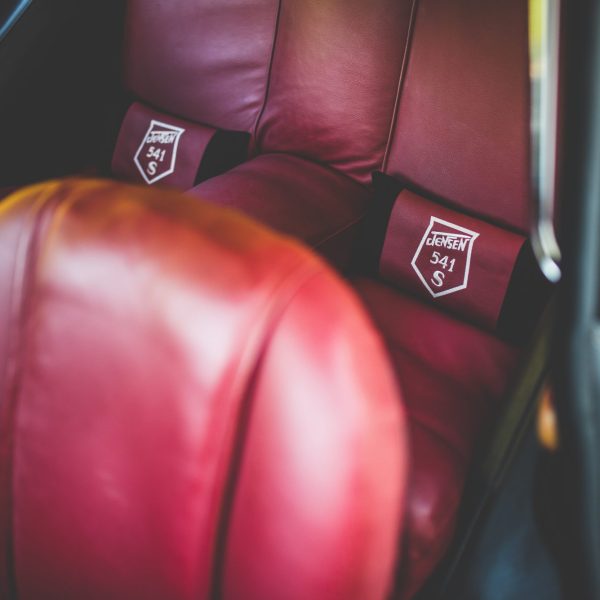

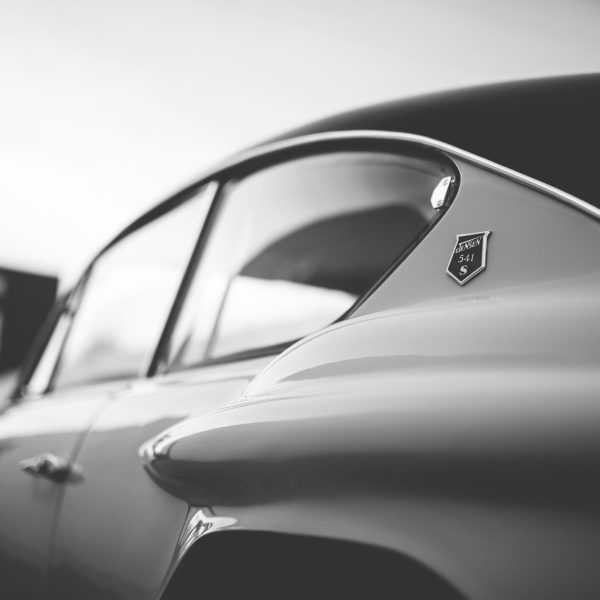
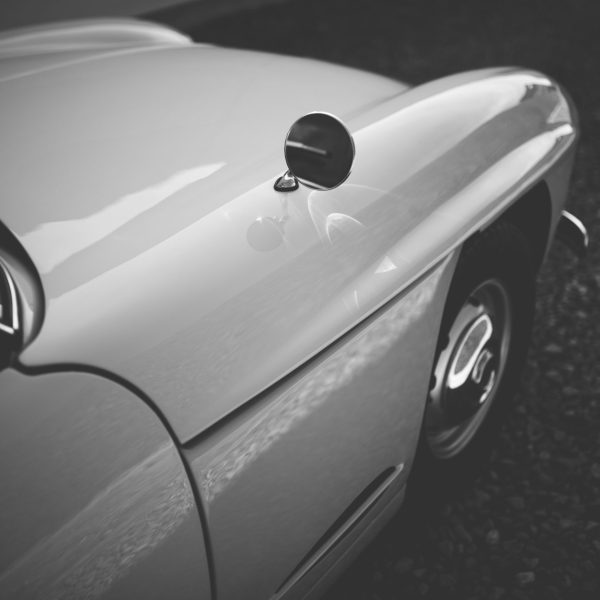
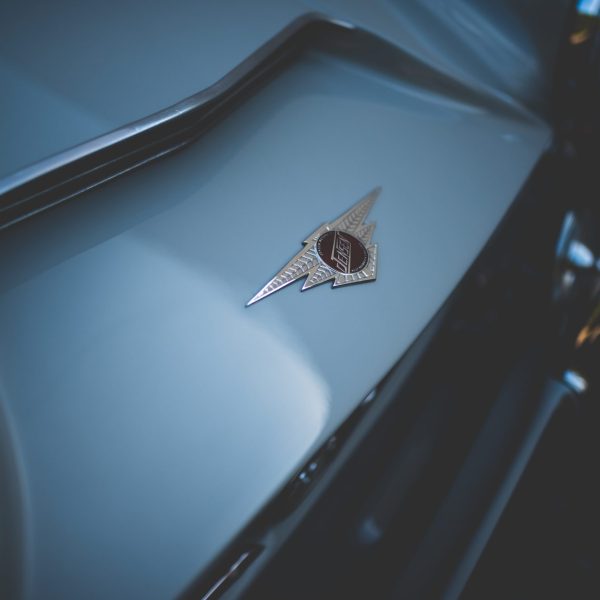

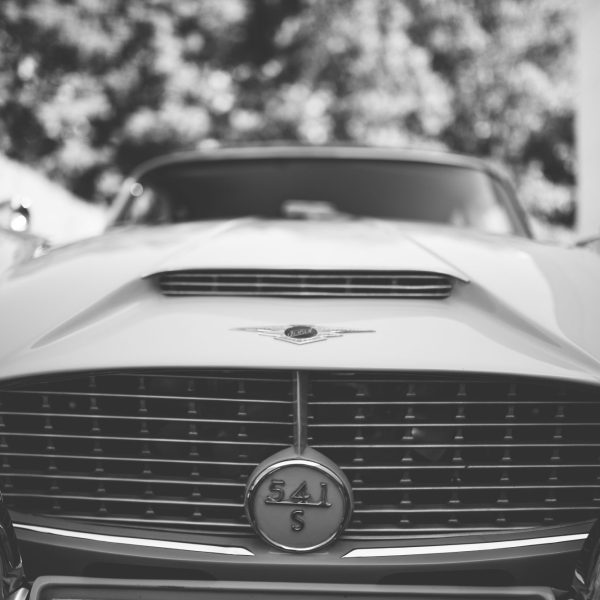

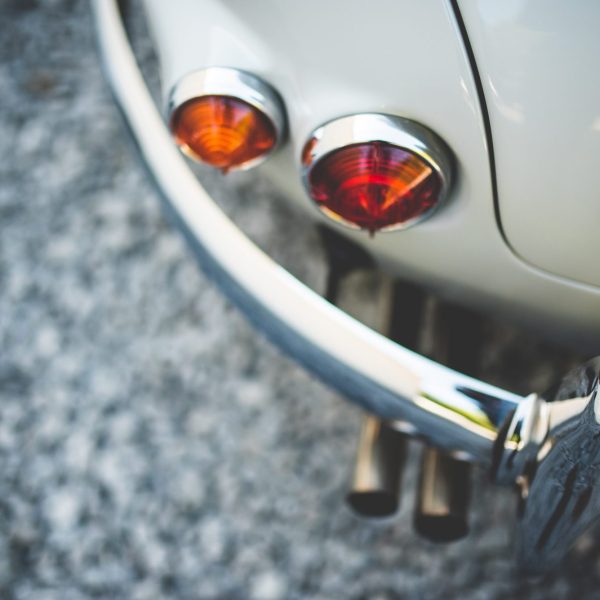
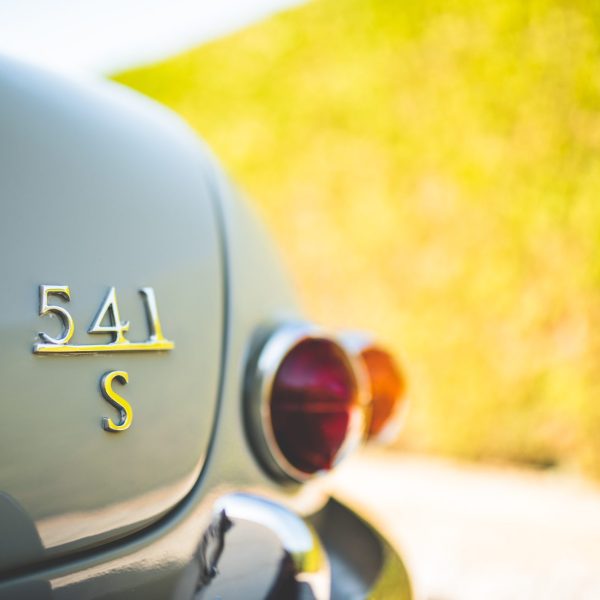
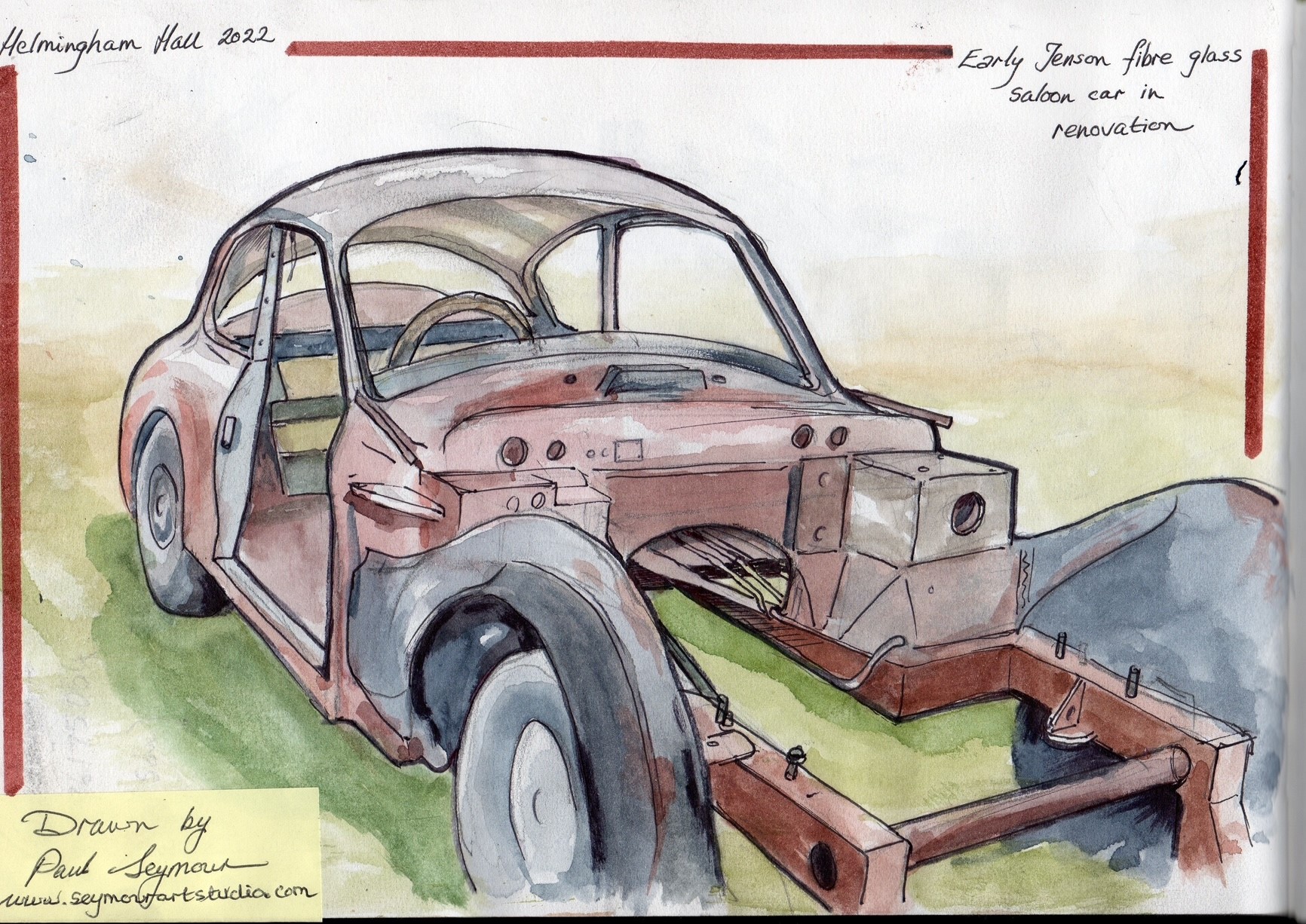
Local artist Paul Seymour has sent us in this beautiful watercolour painting of our 1959 Jensen 541R that he sketched at our stand at this years Helmingham Hall Classic & Sports Car Festival.
We brought along the 541R which is in the early stages of its restoration with us.
We’ve even got some photos of Paul at work while he roughed out the sketch which you can see below and head over to his website and check out some of the other amazing artwork he has done and the tuition courses he offers.
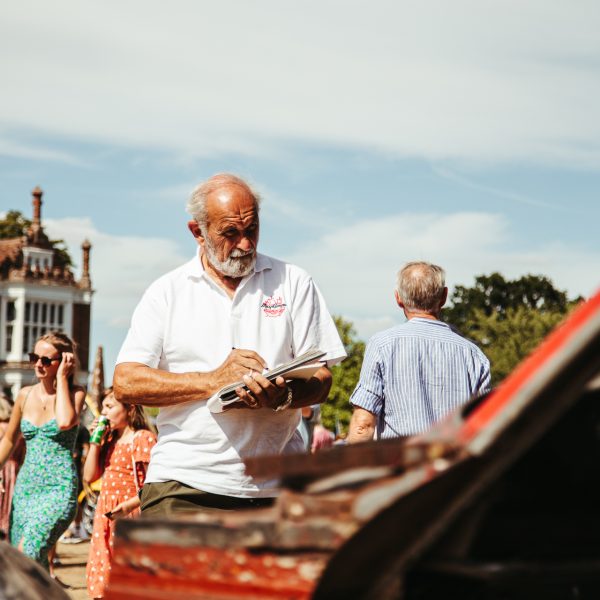


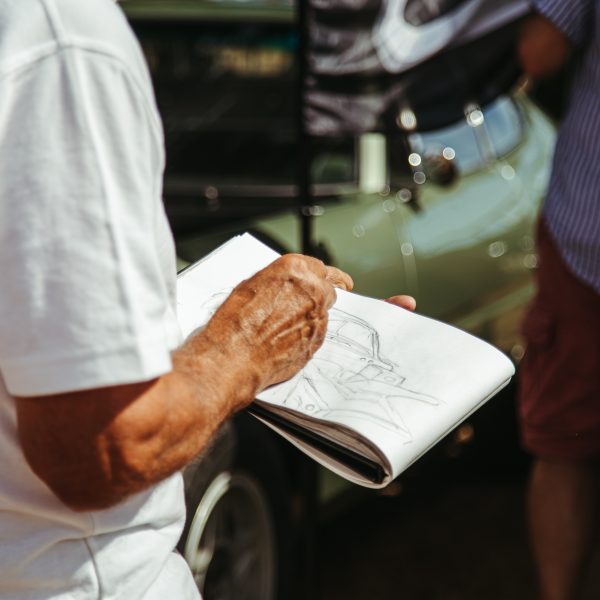
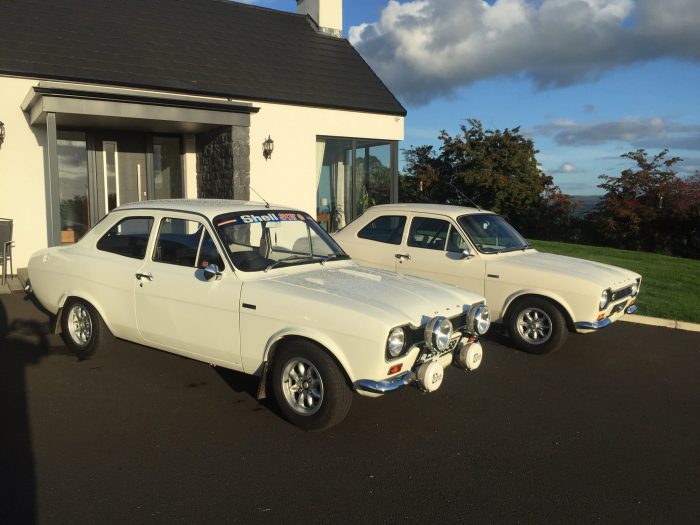

First up on tour is the amazing 1969 Ford Escort Twin Cam that was cruising around Ireland on holiday with its owner. We worked on this very car earlier this year and it’s amazing to see it being used and enjoyed. Safe travels!

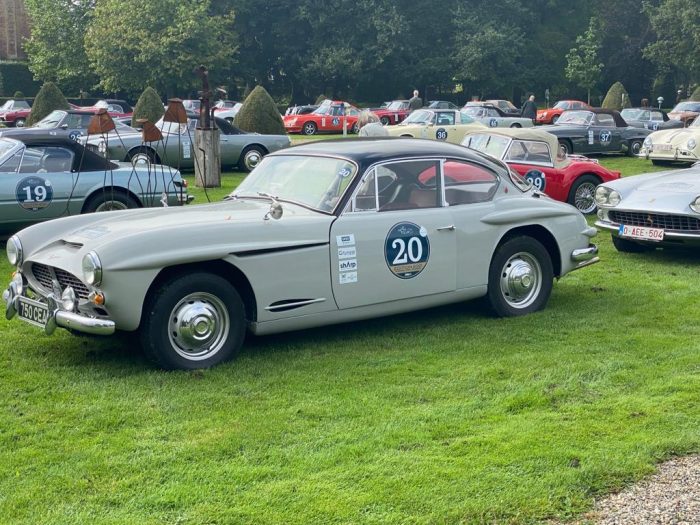
Next on the road is the 1960 Jensen 541S ”Prototype” which was taking part in Petit Tour in Belgium. This Jensen was in with us in 2017 and 2019 for a full restoration but it’s amazing to see it out and being enjoyed by its owner.
It is lovely to receive a copy of the Zomer 2021 Jensen Journaal in the post this week.
Several of our Jensens that we have restored have been featured in this month’s copy of the Dutch magazine, Jensen Journaal! https://jensenholland.nl/ It’s an absolute privilege, so thank you.
The magazine talks about our 1957 Jensen 541R, the 1958 Jensen 541R, the 1960 Jensen 541R and the 1960 Jensen 541S (The Prototype).
Here are our website links to the cars that were featured to find out more information on each of the restoration projects.
https://bridgeclassiccars.co.uk/category/projects/completed/1958-jensen-541r-navy/
https://bridgeclassiccars.co.uk/category/projects/completed/1957-jensen-541r/
https://bridgeclassiccars.co.uk/category/projects/completed/1960-jensen-541r-01/
https://bridgeclassiccars.co.uk/category/projects/completed/1960-jensen-541s/
We call it the Jensen bible and in order to protect it Kath has made a bespoke leather book bag.
Jensen Genome Richard Calver July 2019 Edition
She started the process by drawing, measuring and working out the dimensions and design for the bag. Black leather was cut out to the required shapes and measurements and then mounted onto 3mm foam. She then sewed around the edges of the mounted pieces to make sure they were secure.
The first step in putting it all together was to sew a zip between two pieces of mounted leather with a zipper foot. Red topstitching went down either side of the zip as a finishing touch. Kath attached the zip and sidebands with clips onto the front of the book bag, to make sure it all fitted together, before sewing in place. She checked the book fitted inside, before sewing the back of the bag on. Red topstitching running around the outside edges of the front and back matched the zipper.
Some of you may remember we mentioned our busy Jensen workshop last year, and it hasn’t slowed down in 2021. We’ve become the Jensen Specialists of the UK with a constant set of Jensen 541R and 541S projects passing through our doors on a regular basis. With projects ranging from full nut and bolt restorations to small fixes and services, we’ve been inundated with Jensen’s, and we love it!
2020 saw 8 Jensen’s in at the same time, which led to this amazing shot of them all lined up. Our technicians are now well versed in Jensen mechanics, electrics and bodywork as we’ve still got 6 of them in the workshop plus another stored at Bentwaters waiting to find a new home.
With only 193 Jensen 541R’s ever made and 127 541S’s made, and even fewer still on the road, we’ve had a large quantity of them in the workshop.

In order to manufacturer our bespoke Jensen 541S fitted car cover we have called upon the experts at Protec Covers in Bradford. They took a trip down to our workshops to measure up for the cover which we should hopefully see with us with a week or so. Whilst on site, they have also taken measurements for the Jensen 541R which is approximately 2 inches smaller than the 541S.
Now the templates have been drawn up, for anyone who owns a Jensen 541R or S Protec Covers will soon be able to provide a fitted car cover in a choice of colours.
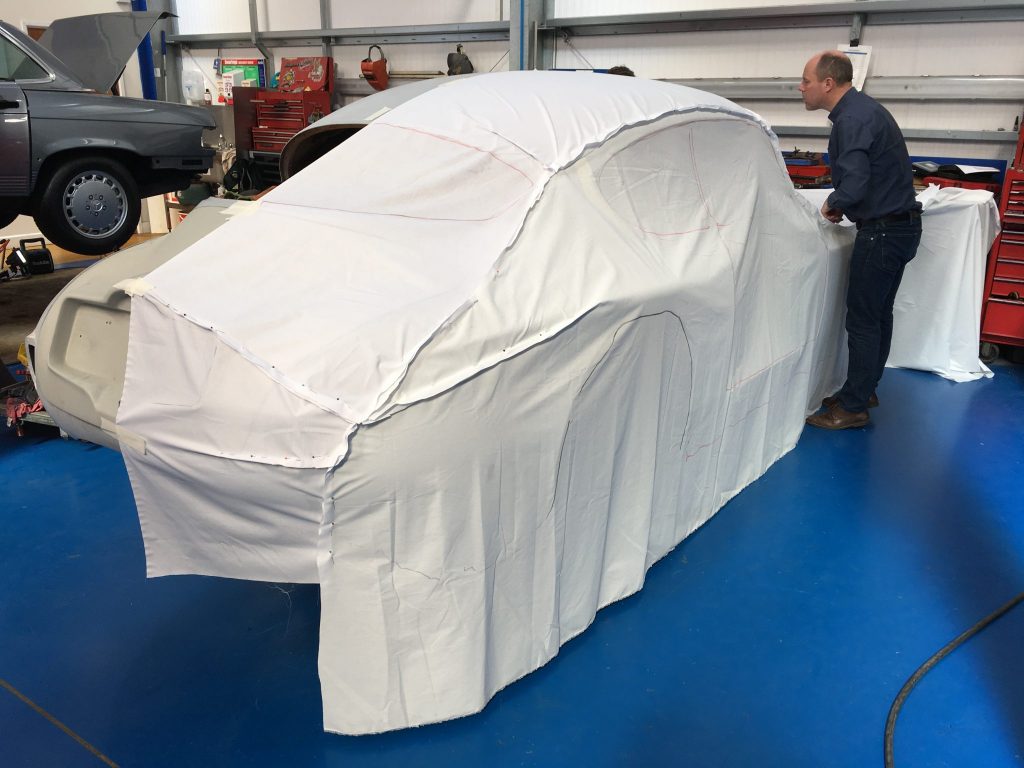
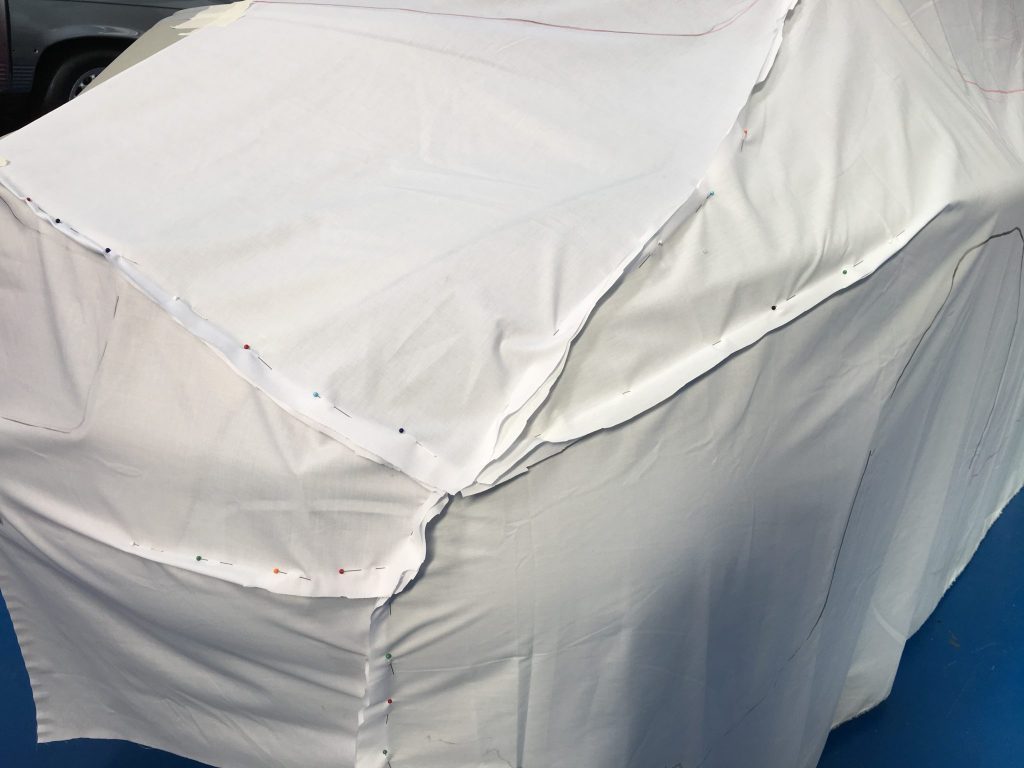
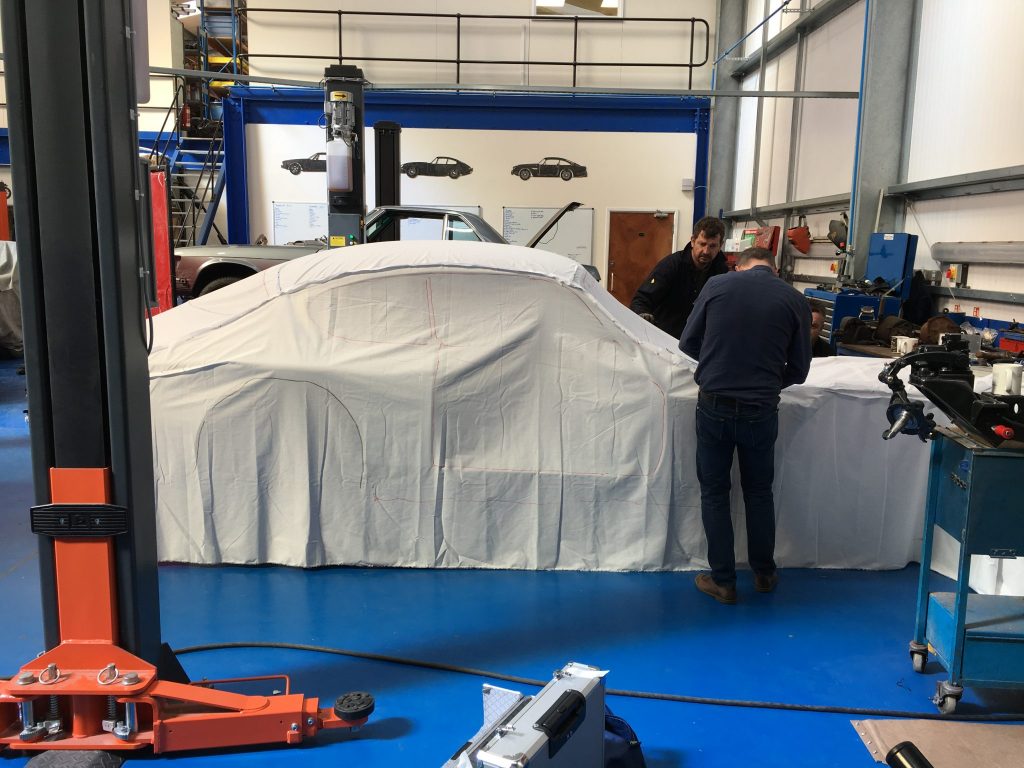
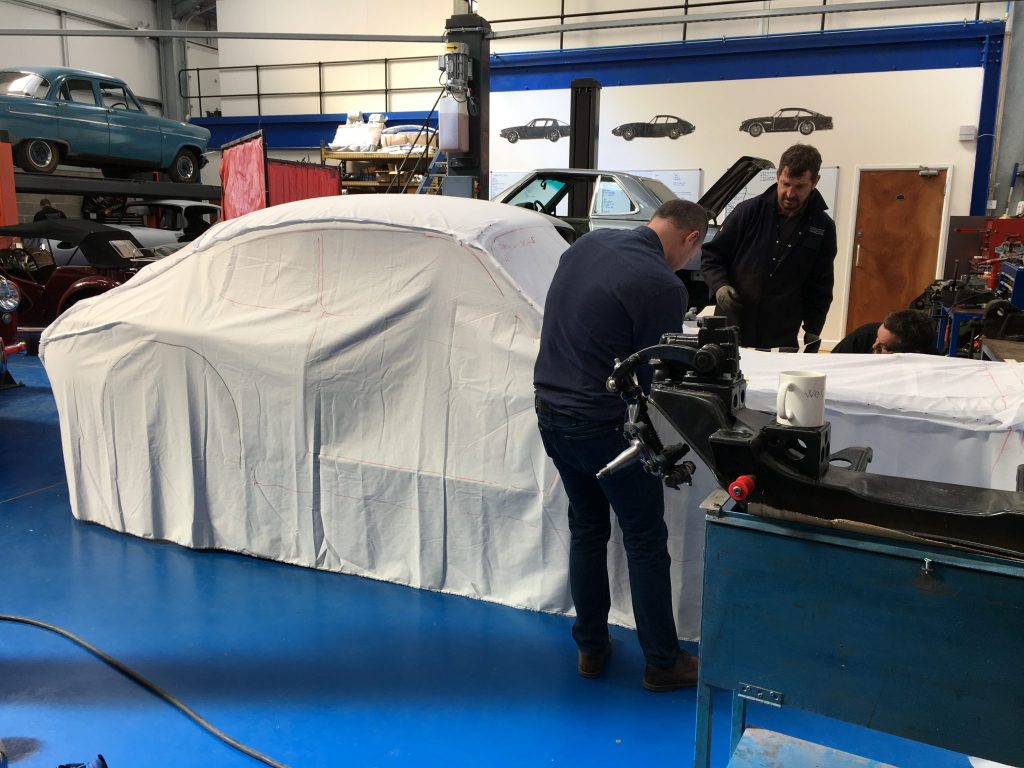
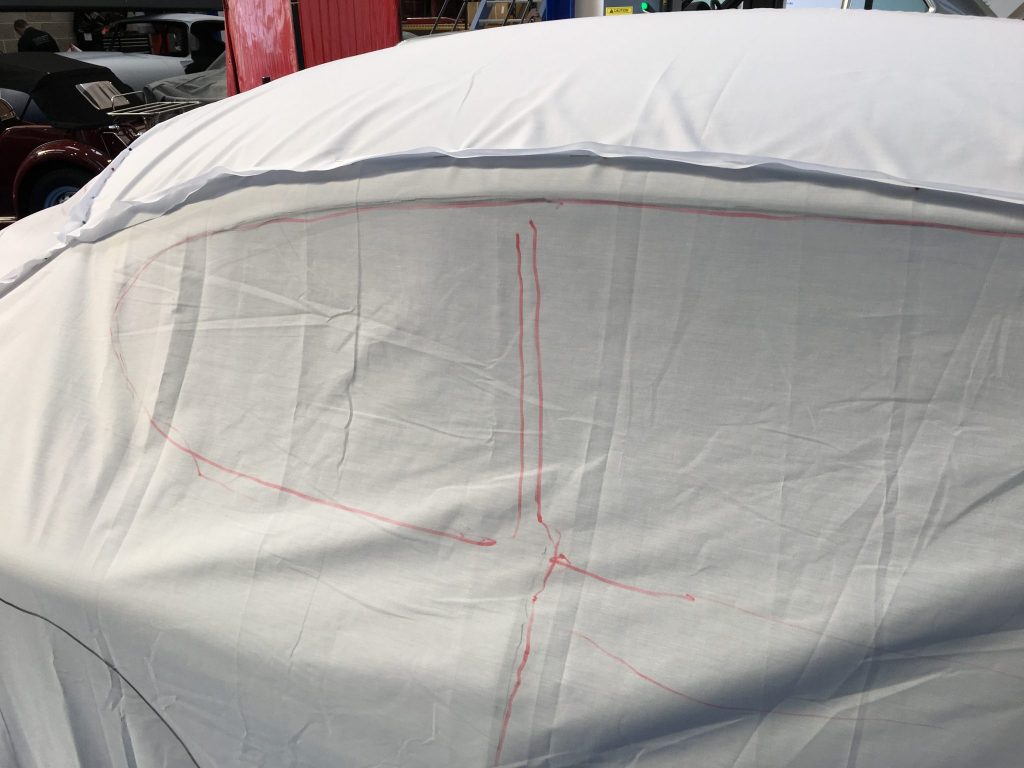
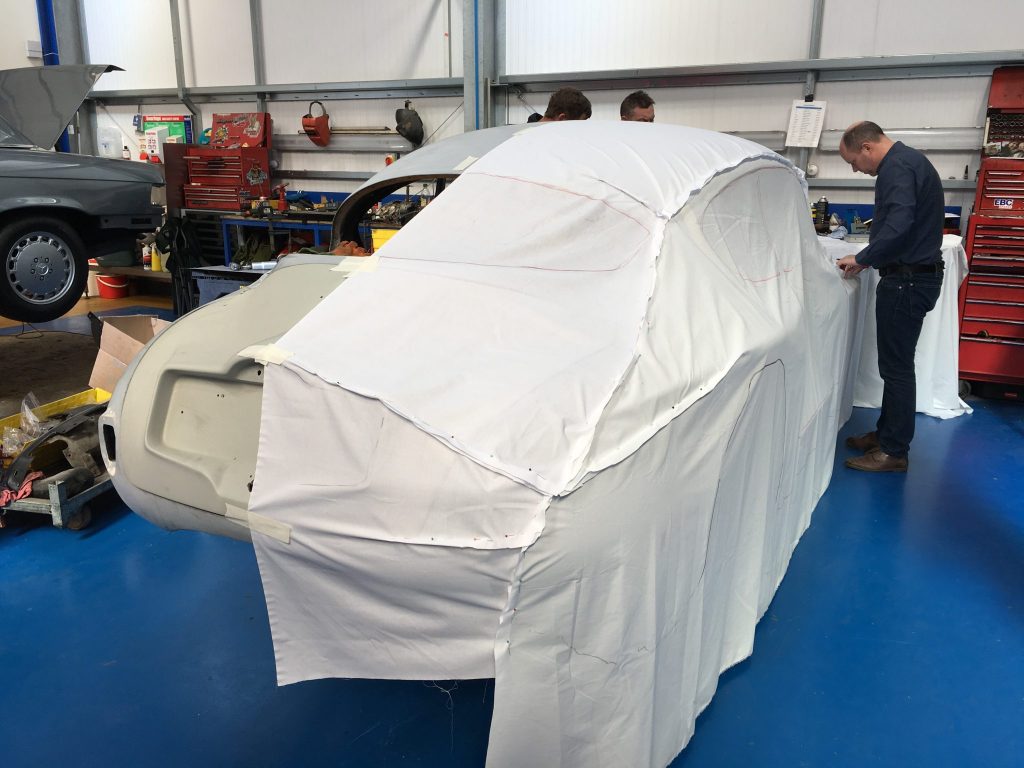
Protec Covers is built on the principles of making quality products and providing reliable service. Their diversified product range continues to grow by following market trends, improving their standard products, and listening to the customer. Although they specialise in caravan covers, motorhome covers and car covers, they have made covers for practically everything.
Having been in the vehicle cover business for over 15 years and having manufactured thousands of covers they have an extensive database of patterns enabling them to convert each order into an excellent fitted cover.
Every element of their covers are made within the UK, from the fabric to the thread they use. They believe in supporting UK business.
During their time they have been blessed enough to provide items for such people as Martin Clunes, Jay Kay (Jamiroquai) and Jamie Oliver. As well as providing covers and show covers for many leading vehicle manufacturers.
[vc_row][vc_column][vc_column_text]After a long journey that saw us head into Europe our 1960 Jensen 541S finally settles into its new home and what amazing company it is in with.
[/vc_column_text][/vc_column][/vc_row][vc_row][vc_column][vc_gallery type=”image_grid” images=”26291,26292,26293,26294,26295,26296,26297,26298,26299,26300,26301,26302,26303,26304,26305,26306,26307″][/vc_column][/vc_row][vc_row][vc_column][vc_column_text]Home time; waiting at the Eurotunnel for the return train.
“Hi, I’m the former owner of the Jensen 541 S (prototype) that you have been restoring. I’ve been following the progress of its rebirth online over the past months and now it is complete it looks stunning, well done to all those skills for returning her to her former glory.”
At the start of the 1950s, the Jensen Motor Company had a financially sound business producing commercial vehicles and building bespoke bodies for other manufacturers. As is often the way with successful entrepreneurs, the Jensen brothers enjoyed having their name on their products and having been involved for years prior to the war building small cars in conjunction with Standard, Austin and Wolseley, their attention turned again in the late forties to the possibility of creating a rather more exclusive Jensen. Richard Jensen was joined in 1946 by Eric Neale and they jointly penned the sleek (and expensive) Interceptor which remained in production from 1950-57. The bodywork was mostly aluminium, but as an experiment Jensen had started making the large boot lids in a revolutionary material formed from hair-thin glass embedded in a resinous gel, ‘Glass Fibre’.
Eric Neale’s influence was immediately obvious in the, new for 1953, Jensen 541. He first created the distinctive ‘mouth’ shape, anticipating the cold air requirements of a possible big V8 although the Austin 4-litre straight six turned out to be the engine of choice, and the rest of the body flowed back from that point. A lattice of wooden body formers provided a reference over which skilled craftsmen beat a skin of aluminium. The finished car was exhibited at the 1953 Motor Show but there was one trick left up Jensen’s sleeve, production cars were to be constructed from glass fibre! As production of the 541 settled down the options available increased. A package incorporating the most frequently chosen extras was applied to the car which was then marketed as the ‘541 Deluxe’ and rack and pinion steering followed shortly in the ‘541R’.
In 1959 work started on creating a slightly larger 541, which would be better suited to long-distance cruising. This car was to have an auto gearbox as standard and was wider and taller than its predecessor, and so was born the new 541S. Some 4” inches wider than the original 541R, while also offering increased headroom and greater luggage capacity, the ‘S’ version was generally considered to be a more practical machine and certainly more comfortable for touring. In addition to a general increase in size, the body styling changed at the same time with distinctive ‘scallops’ being added at the rear and on the bonnet and a new grille. Less apparent initially were the improvements these modifications made to road holding, stability and ride.
In the 541S, Jensen used their own powerful version of the Austin DS5 4-litre straight-six engine featuring triple H4 SU carburettors, a high compression ‘Weslake’ head, custom-made twin exhaust manifolds and an alloy baffled sump/oil cooler. A total of 127 cars were hand-built between 1960 and 1962 at Jensen’s West Bromwich factory, most having GM-licensed Rolls-Royce ‘Hydramatic’ gearboxes. This was unusual at the time as most performance cars were fitted with ‘sporty’ manual gearboxes but the automatic suited Jensen’s criteria for the 541S of effortless speed and luxurious long distance cruising, although twenty-two were fitted with Moss manual gearboxes at their owner’s request. The 541S is also notable for being the first British car to have seat belts fitted as standard equipment and the pioneering use of Dunlop disc brakes on all four wheels was carried on from the ‘Deluxe’. Other safety equipment included a padded windscreen surround, fire extinguisher and a first-aid kit and each car was fitted with a quality Motorola radio as standard.
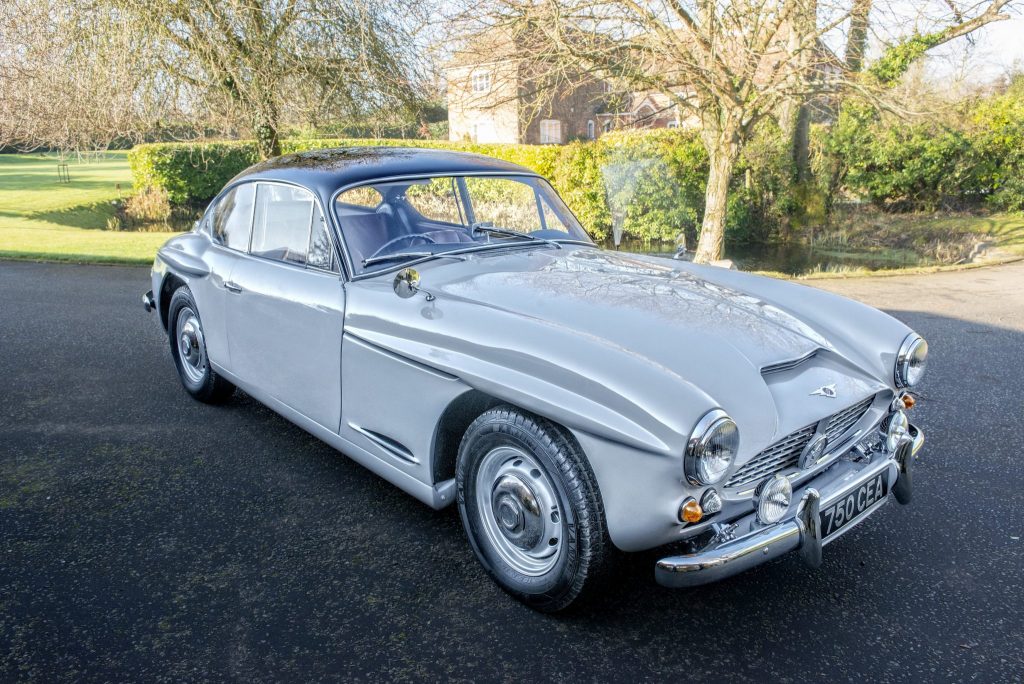
750 CEA, later registered as 377 HWT, Chassis Number ‘JM/EXP/101 is almost certainly the automatic 541S used by Jensen in 1960 on its stand at the London Motor Show at Earl’s Court. There were three experimental (EXP) cars built, (‘pre-production prototypes’), two being manual and one automatic. ‘101’ is automatic and was registered 750 CEA although the photographs from the show display the car with ‘JENSEN’ on the number plates. It was finished in Pearl Grey and looks superb sat on Stand 134.
This car was registered to Jensen Motors for a period of some two years. A letter in the file from them confirms that during this period it was used for road tests, demonstration purposes and as an experimental car, and according to the letter was no doubt driven by the Jensen brothers and carefully looked after by the Engineering Department. It was featured in ‘THE MOTOR’, October 19th. 1960 and ‘AUTOCAR’, Feb 3rd. 1961 road test reports. Whilst currently registered 377 HWT, there is verification from both DVLA and the Jensen Owners Club that 750 CEA was its original registration. An expression of interest has been lodged with DVLA to repatriate this number rightfully back to this car. An extensive history file accompanies the car and includes the original London Motor Show 1960 Guide, press cuttings of the day, old photographs, past invoices and letters. The show car was originally Pearl Grey but at some point has been changed to Maroon, but inside the engine bay an area of original colour has been deliberately left, presumably to aid a return to its factory finish.
First registered in September 1960 this most beautiful Jensen 541S, chassis number JM/EXP/101 is currently reading an unwarranted 75,800 miles.
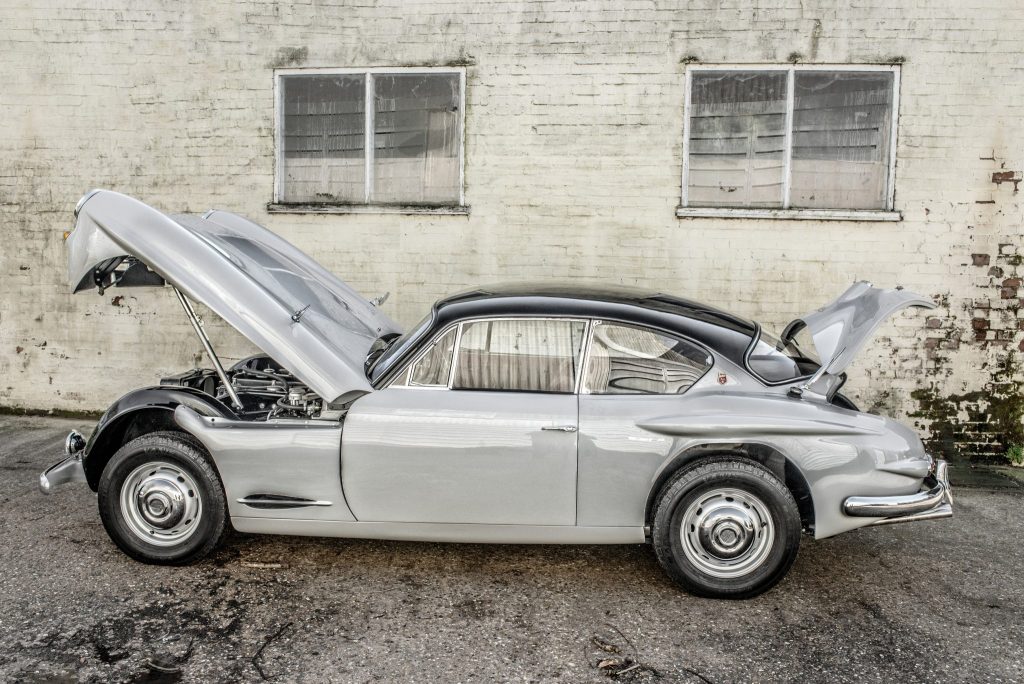
This extremely rare and beautiful car has been in our workshops for a number of years undergoing an extensive ‘nut and bolt’ restoration. The work has been carried out to the original factory specification and is now finished in Pearl Grey with a black roof and red interior.
It was one of three prototypes for the 541S, the final iteration of a model that was very important to the long-term health of Jensen. It was a fetéd and much admired Motor Show car and an important part of Jensen’s history, and on top of all that, it’s a super British classic sports car that would be welcome anywhere.
Jason from Sugar and Spice Photography has once again completed the final photo shoot of our restored Jensen 541S.
The location for our shoot is within the grounds of the beautiful setting of Hungarian Hall.
Hungarian Hall is set in the un-spoilt Suffolk countryside just a few minutes from Woodbridge and a short drive away from the heritage coast including the coastal towns of Aldeburgh, Orford and Felixstowe.
[vc_row][vc_column][vc_column_text]With our 1960 Jensen 541S restoration journey almost complete, today is the day for our wonderful photo shoot.
The sun is shining bright and we are on location bright and early with Jason from Sugar & Spice Photography. Today’s venue, the beautiful setting of Hungarian Hall, hidden down the country roads of Pettistree, Suffolk.
Hungarian Hall opened its doors to the public for outdoor activities and corporate hospitality nearly 25 years ago.
Following the huge success of a family marquee wedding held there in 2007 they decided to create Hungarian Hall Events, wedding and events venue, which has gone from strength to strength.
The licence for ceremonies was obtained in late 2008 and the word has spread fast about what a fantastic wedding venue they have to offer here in the heart of the Suffolk countryside. Their wedding venue, near Woodbridge is perfect for a beautiful and tranquil wedding.
With over 10 years experience in marquee weddings through the sister company Anglia Coastal Marquees it has enabled them to be creative and adaptable to your requirements resulting in bespoke marquee weddings every time!
David and the team have been very accommodating this morning, giving us a tour of the setting and allowing us full access for different photos and angles.
[/vc_column_text][/vc_column][/vc_row][vc_row][vc_column][vc_gallery type=”image_grid” images=”26241,26242,26243,26244,26245,26246,26247,26248,26249,26250,26251,26252,26240″][/vc_column][/vc_row]
We are now into the very final stages of our 1960 Jensen 541S restoration. This very special and very unique car was one of only 3 prototypes produced by the Jensen brothers and was the only prototype to hold the automatic transmission which Jensen then went on to mass produce.
In theory, this is the very car that started the production of the Jensen 541S and this is the very car that can be seen across the majority of the Jensen marketing campaigns.
Unfortunately we have been unable to reunite the car with the original UK registration 750 CEA, due to the it being owned by an individual elsewhere…however the vehicle will be residing in Belgium and the current owner has now received confirmation that he able to use the original number of 750 CEA there which is fantastic news for the car and the history.
The final stages are now being completed with only the paint imperfections now to address.
The car will be leaving the UK early January to be introduced to her new home in Belgium.
Our Jensen 541S has returned to Graham Whitehouse Autos to have the gearbox set up.
The gearbox was rebuilt by Graham Whitehouse Autos earlier in the project build but now we have it fitted back into the car and with the engine running we can now set up to maximise performance.
In order to reset the gearbox the bottom bell housing is removed along with the torque set torus cover bolts. The initial setting of the throttle control valve to gearbox is then reset. Once the car is road tested they then adjust the throttle valve linkage to give correct line pressure and kick down operation. A further road test is given with adjustments being made to fluid level to correct the settings. The torus cover bolts were re-torqued and then bell housing cover is refitted.
[vc_row][vc_column][vc_column_text]We already hold the tooling to re-produce the front grilles themselves but now requiring the front grille surround it was back to design mode for Dave as he got to work fabricating the surround edging.
[vc_row][vc_column][vc_column_text]We are now fine tuning and running up our Jensen 541S engine. The engine has been removed and detailed but has not been rebuilt.
We carried out various tests when we original received the car and with all running and pressures how you would expect we made the decision, alongside the customer, to leave the engine in one piece.[/vc_column_text][/vc_column][/vc_row][vc_row][vc_column][vc_video link=”https://www.youtube.com/watch?v=yujsnYx_9ew”][/vc_column][/vc_row][vc_row][vc_column][vc_column_text]However, now we are running her up once again for fine tuning, Ady has discovered a lot of wear in the original rocker shaft.
Due the fact that these shafts are almost impossible to find Ady has re-produced the shaft and fitted with brand new fingers supplied to us from AH Spares.
You can see the wear in the original rocker shaft here.
We are now days away from the completion of our 1960 Jensen 541S (the prototype).
It has been a long restoration journey but hugely rewarding as we revive one of the very first prototype 541S’s to leave the Jensen factory.
We still have a couple of smaller tasks to take care of and some touching up in places but we are so very close now. The grille is cut, shaped and ready to be fitted but we are just waiting on completion of the outer chrome edging before we can fully fit up.
The fixings visible behind the rear plate will also be addressed as we lose sight of them during the paint touch up process.
We have unknowingly used the services of Speedy Cable in the past on various clock and dials refurbishment productbut going through various third parties.
On the restoration of our Jensen 541S we have headed straight for the source and now want to say a huge thank you to the guys and girls at Speedy Cable. They have made an incredible job of refurbishing the old clock when some other restorers have been unable to help with our request.
From the outside, the clock looks as original as the day she left the factory but due to modern technologies the internals have been upgraded.
Speedy Cables is an independent small company located in South Wales employing around 20 people with a variety of professional, engineering and craft skills engaged in the customisation and repair of instrumentation and the manufacture of custom control cables and custom drive cables.
The market sectors in which the company operates is varied. Historically it was predominantly automotive including replica cars, classic cars, classic motorcycles, taxis, kit cars, motorsport and military whilst we continue to serve those sectors we also serve the agricultural, industrial and security sectors.
The company batch produces products from volumes of 2/3 up to 3/400 for some products/sectors and also extensively provides a bespoke service for almost all products.
Speedy Cables manufacture a wide range of mechanical drive, control and push pull cables from pattern, for sectors including automotive, motorcycle, canal boats, marine, agricultural, industrial and many more.
Speedy Cables History
Speedy Cables is a long established company and has served the automotive industry for over 60 years. The company Speedy Cables (London) Ltd was registered on the 13th of February 1975 and traded from premises in Islington, London, but its origins go back to a much earlier time when it had non limited status and operated from premises in Marylebone in London’s West End. The company had to move to Islington when its premises were compulsory purchased and demolished to build London’s Post Office Tower on the site.
A good deal of state secrecy and intrigue was involved at the time because the new Post Office Tower was a strategically sensitive installation that officially did not exist. Until the mid-1990s, the building was a state secret, and did not appear on official maps, even though it could be seen from just about anywhere in central London. Its existence was finally confirmed by Kate Hoey, MP, on 19 February 1993 when she addressed parliament. “Hon. Members have given examples of seemingly trivial information that remains officially secret. An example that has not been mentioned, but which is so trivial that it is worth mentioning, is the absence of the British Telecom tower from Ordnance Survey maps. I hope that I am covered by parliamentary privilege when I reveal that the British Telecom tower does exist and that its address is 60 Cleveland Street, London.”
If Speedy Cables’ founding business had not moved it could have vanished from the map into a black hole. This would surely have been one of the less common problems that new businesses have to contend with and overcome.
After its lucky escape from Marylebone however the company flourished in Islington and by the year 2000 it had outgrown its premises and moved to its present location near Swansea in South Wales. Over the years the company has placed great emphasis on retaining its staff with their many years of experience and acquired instrumentation skills. Speedy Cables (London) Ltd can now rightly claim to be a leader in its specialised field.
The company now manufactures and supplies all kinds of mechanical drive and control cables including a wide range of automotive instruments and gauges. In addition we repair, restore, and calibrate gauges from most classic, vintage and kit cars. The company holds ISO9001 2008 Approval and our certification can be seen by clicking here.
Lots of putting on and taking off today as John fits up the bootlid on our 1960 Jensen 541S.
It is finally secure and in position and looking incredible.
Every line and curve on this car is truly stunning…
Our Jensen 541S has been bare due to the missing spare wheel carrier and like most items on the Jensen they are almost impossible to source.
Thanks to David at the Jensen Owner’s Club we now have exactly what we need and the spare wheel is now securely in position.
The beautiful door cards are now fitted back into place on our 1960 Jensen 541S.
John is now on the final stages of the build with only small, concentrated areas to focus on now. The final parts of the chrome-work will be back with us early next week.
With the new flooring now in position we are now able to re-install the fuel tank to our 1960 Jensen 541S.
I won’t lie to you, fitting up the power steering hasn’t been ‘EZ’ (sorry, couldn’t resist), through no fault of anyone in particular but simply due to the fact that this may be the only Jensen 541S of it’s kind to have one in.
We called upon the assistance of EZ Electric Power Steering, the market leaders in the manufacturing of classic car power steering. Luckily they had experience in the Jensen 541S having produced one before but unfortunately it turns out that the one before happened to have a manual gearbox.
Upon arrival we quickly noticed that the new system built for us was not going to fit correctly so back to Holland it went, along with the old rack for a new system to be made.
Just waiting on the door cards to be completed but we have made a really good start with the refit of the Jensen interior. We have had very little to do with the interior as it came to us look beautiful. A few minor alterations and a couple of areas needed some TLC but we mostly removed, preserved and refitted. The carpets are in now in position as are the rear seats.
We have made up a new parcel shelf and cut in the speak holes.
The brand new flooring is now in position and looking lovely.
[vc_row][vc_column][vc_column_text]A couple of extra parts to get re-chromed, an over-rider, brackets and oil filler cap. A few weeks time we’ll have these back and ready to be fitted.
We are currently in the process of fitting up power steering to our 1960 Jensen 541S. Obviously not an original install when rolled out of the factory in 1960 but an excellent addition to the restoration.
EZ Power Steering specialise in power steering for classic vehicles. Their main offices are in Holland where they manufacture the items but they have represntation here in the UK in
An EZ Electric Power Steering system is completely hidden underneath the dashboard. The existing steering rack or box remains unchanged and thus retains the standard steering ratio and setup. The amount of assistance is fully adjustable and is sensitive to speed and load. They use CNC laser cut bespoke brackets designed to fit the original mounting points of your car. As no holes are drilled, with no cutting or welding to the chassis or body, the car can always be converted back to its original steering column. Under the bonnet there are no changes, everything remains as original. The advantages of an electrical system opposed to a hydraulic system are numerous. The electric motor only uses power when steering assistance is necessary whilst a hydraulic pump is continuously operating when the engine is running. A hydraulic setup generally uses around 4 bhp and therefore consumes extra fuel, even when driving straight ahead.
Because the electric power steering system is truly speed sensitive, it will steer light at low speeds and not become lighter at high speed. The amount of assistance can be selected by turning a potentiometer, so that the driver can select the desired feel (i.e. more assistance with wider tires and/or a smaller sports steering wheel’. With a classic hydraulic system there is usually little feel and no possibility to adjust this at all.
In the unlikely event that the electric power steering system has a defect, the car would steer exactly like it did prior to power steering conversion. If a car fitted with an hydraulic system would have a fault the car would steer extremely heavy.
The EZ Electric Power Steering works without making a sound. It can not leak and is completely maintenance-free.
EZ Power Steering are no strangers to the Jensen 541S but ours happens to be a unique one. Unbeknown to everyone, when the new power steering system arrived is wouldn’t fit eaxctly where it needed to which left both us and them a little confused.
It turns out that the automatic transmission makes a difference to the install and only having experienced a manual Jensen they are having to rebuild the system. This means the old column and new column have been returned to Holland and we await its arrival.
The order was placed at the back end of 2017 so it has been a long wait for the production of our Jensen 541S windscreen but the wait is over.
Due to the rarity of the car itself there are very few, if not any, brand new screens still in existence. We therefore commissioned for a brand new screen to be manufactured in Finland and due to complications in the factory a 4 week lead time ended up being 7 month lead time but the wait is finally over.
The screen has arrived and along with the brand new rubber is now fitted and in position.
Original documentation from the Jensen Car Company to confirm our 1960 Jensen 541S was indeed one of the prototypes.
‘Congratulations on your acquisition. Your car was one of the three experimental chassis built to prove the 541S, and they were numbered JM/EXP, JM/EXP/101 and JM/EXP/102. Only EXP/101 had the automatic gearbox.
There are a few remaining records of the 541S, but we can supply the following on your car:
Chassis number: JM/EXP/101
Engine number: 40/A/11058
First registration: 750 CEA
Colour: Pearl Grey, Black Roof
Trim: Red
Invoiced: 11 January 1963
First owner: E.D Robinson
The car was used for road tests, demonstration purposes and, as an experimental car, was no doubt driven by the Jensen brothers and carefully looked after by the engineering department.
In addition to three experimental cars, 124 production examples of the 541S were built. Most appear to survive.
You might like to contact Keith Cerrino of the JOC for any further information on this car. His address is: “Dalkeith”, Village St, Harvington, nr Evesham, Worcs, WR11 5BQ (tel. 0386.871009)’
Bridge Classic Cars are award winning Classic Car Restoration and Maintenance specialists. Your pride and joy is in safe hands with our expert Classic Car Technicians. Take a look at our awards here.